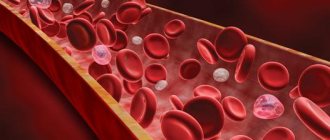Indications
Why test urine for copper? The study is carried out to determine this important microelement in the human body and evaluate liver function.
Indications for the study:
- Impaired copper excretion is characterized by liver disease and pathological changes in the brain due to the accumulation of Cu in tissues and organs.
- Menkes symptom, when absorption of this microelement does not occur in the intestines.
- Liver diseases (hepatitis, cirrhosis).
- Copper poisoning of the body.
Copper in urine
Quantitative determination of copper content in a portion of urine, which allows you to assess the excess or deficiency of this microelement in the body.
English synonyms
Cu (Copper), Random Urine.
Research method
Inductively coupled plasma mass spectrometry.
Units
μg/L (micrograms per liter).
What biomaterial can be used for research?
A single portion of urine, daily urine.
How to properly prepare for research?
- Eliminate alcohol from your diet for 24 hours before the test.
- Avoid (in consultation with your doctor) taking diuretics for 48 hours before collecting urine.
- Avoid physical and emotional stress during the collection of daily urine (during the day).
General information about the study
Copper is a vital trace element that is part of many enzymes. It is necessary for the synthesis of hemoglobin, redox processes, the formation of connective tissue, the synthesis of melanin pigment and the functioning of the nervous system.
Many foods contain copper: nuts, chocolate, mushrooms, grains, some seafood, liver, dried fruits. Copper gets into drinking water in small quantities from copper pipes and copper utensils. This microelement is absorbed in the intestines, then binds to proteins, turning into a non-toxic form, and transported to the liver. Copper accumulates in the liver and, if necessary, is delivered to different parts of the body in combination with the protein ceruloplasmin. In the bloodstream, 95% of copper is bound to ceruloplasmin, and the remaining 5% is bound to albumin. Only a small portion of copper is present in the blood in free form. Excess microelement is excreted from the body with bile and urine. Normally, copper is detected in urine in small quantities. Copper deficiency or excess occurs relatively rarely, but has serious consequences.
Wilson-Konovalov disease (hepatocerebral dystrophy) is a genetic disease with an autosomal recessive inheritance pattern that leads to excessive accumulation of copper in internal organs with predominant damage to the liver and brain. One of the signs of the disease is Kayser-Fleischer rings around the iris of the eye, caused by copper deposits. Symptoms of the disease include anemia, nausea, abdominal pain, jaundice, dystonia, tremor, motor and behavioral disorders. A similar clinical picture is observed in acute or chronic copper poisoning at work or in environmental contamination. Chronic liver diseases may also be accompanied by impaired copper metabolism.
A deficiency of this microelement can occur against the background of severe malabsorption (impaired absorption of nutrients from the intestine), for example, with cystic fibrosis or celiac disease. Copper deficiency in the body is manifested by microcytic anemia, osteoporosis, and neutropenia. With a severe genetic syndrome (Menkes disease), caused by a congenital malabsorption of copper from the intestines, children experience profound impairments in the development of the nervous system and thinning hair.
Untimely diagnosis of conditions accompanied by a significant violation of copper levels can lead to serious consequences and even death.
What is the research used for?
- For the diagnosis of Wilson–Konovalov disease.
- For the diagnosis of acute or chronic poisoning with copper and copper-containing substances.
- To monitor the treatment of Wilson–Konovalov disease.
- To diagnose copper deficiency or excess in the body.
When is the study scheduled?
- If Wilson-Konovalov disease is suspected (Kaiser-Fleischer rings, liver pathology and neurological disorders).
- If copper metabolism is impaired in close relatives.
- During the treatment of pathological conditions accompanied by impaired copper metabolism.
- If acute or chronic copper poisoning is suspected.
- For severe liver diseases.
What do the results mean?
Reference values: 2 - 80 µg/l.
Causes of increased copper levels in urine
- Wilson-Konovalov disease (significant increase in copper content in urine with reduced levels of ceruloplasmin and copper in the blood).
- Acute or chronic copper poisoning (increased concentration in urine and blood with normal ceruloplasmin levels).
- Biliary cirrhosis.
- Chronic active hepatitis.
- Nephrotic syndrome.
- Hypoceruloplasminemia.
- Alzheimer's disease.
- Pellagra.
- Carrying out chelation therapy (treatment of copper and heavy metal poisoning, Wilson-Konovalov disease).
Reasons for decreased copper levels in urine
- Copper deficiency in the body (due to malabsorption or inadequate nutrition).
- Menkes disease.
What can influence the result?
A false increase in copper in urine is possible:
- when taking vitamins, mineral supplements and herbal preparations containing copper a week before the test;
- during pregnancy:
- when taking carbamazepine, phenobarbital, estrogens and oral contraceptives.
Important Notes
- To correctly interpret the results, it is necessary to take into account the content of ceruloplasmin and copper in the blood.
Also recommended
- Copper in the blood
- Ceruloplasmin
- Aspartate aminotransferase (AST)
- Alanine aminotransferase (ALT)
- Total protein in whey
- Total bilirubin
- Direct bilirubin
- Total alkaline phosphatase
- Complete blood count (without leukocyte formula and ESR)
- Erythrocyte sedimentation rate (ESR)
Who orders the study?
Therapist, hepatologist, neurologist.
Literature
- Nazarenko G.I., Kishkun A. Clinical assessment of laboratory research results. – M.: Medicine, 2000. – P. 234-235.
- Wilson D. McGraw-Hill Manual of Laboratory and Diagnostic Tests 1st Ed. Normal, Illinois, 2007: p. 186-187.
Decoding
What is the normal concentration of copper in urine? Normal values are 0.007-0.1 mcg/g . The interpretation of the analysis is carried out by the specialist who ordered this examination.
Excess
The indicators are too high, what should I do? Exceeding the norm indicates that there is an excess of this microelement in the body, which means that its excretion is impaired or there has been copper intoxication. Further measures and treatment are prescribed only by a specialist. Therefore, you should not hesitate to visit a doctor, but go as soon as possible.
Flaw
When Cu concentration decreases, we are talking about the development of pathological conditions in organs and systems. Which ones exactly and what to do about it, you need to consult a specialist who will carefully collect anamnesis, take into account all the patient’s complaints and, possibly, prescribe additional diagnostic methods.
Also, you should pay attention to your diet.
Copper deficiency usually occurs in people who are on a vegetarian diet or diet. Therefore, if there is a deficiency of this microelement, it would not be superfluous to consult a nutritionist. Share:
Decoding the results
Excess copper levels in the kidneys
An increased level of Cu in the urine in most cases indicates hepatolenticular degeneration (Westphal-Wilson-Konovalov disease). To confirm the assumption, an additional study is performed - a liver biopsy. This disease is inherited, is extremely rare and is associated with a violation of the metabolic processes of cuprum in the body, which leads to excessive deposition of this substance in the kidneys, liver and other organs. Early diagnosis and immediate initiation of treatment help to curb the development of the disease and avoid severe consequences:
- epileptic seizures;
- cirrhosis of the liver;
- tremor, mental disorders;
- kidney damage.
An increased Cu indicator may indicate biliary cirrhosis (a disease associated with impaired functioning of the immune system, characterized by rapidly developing destructive changes in the bile ducts inside the liver, resulting in bile stagnation and the development of liver failure), nephrotic syndrome (kidney damage, characterized by swelling in the extremities and throughout the body, a number of laboratory changes).
To correctly understand the results of the study, one should take into account the amount of cuprum-containing protein present in the blood plasma and cuprum in the blood. An increased level of cuprum may indicate the following pathologies:
- chronic hepatitis;
- Alzheimer's disease;
- pellagra.
Reduced level
A reduced level of Cu in the urine indicates a cuprum deficiency in the body, which may be caused by an unbalanced diet. Another cause is Menkes disease, which is hereditary. It is caused by disruptions in the absorption and transportation of cuprum in the body. The disease makes itself felt from early childhood and is expressed in convulsions, a significant reduction in the size of the skull and brain with normal sizes of other parts of the body. At the same time, the hair becomes very curly, devoid of pigment, and then falls out.
Symptoms of excess copper
The main symptoms of excess copper resulting from eating foods with high concentrations of this element are:
- Vomiting, nausea, diarrhea;
- Metallic taste in the mouth;
- Stomach ache;
- Kidney failure;
- Neurological disorders (increased salivation, behavioral and speech disturbances, epileptic seizures);
- Liver failure.
Symptoms of excess copper in case of poisoning of the body with copper vapors and compounds are:
- Headache, general weakness, lethargy, decreased performance;
- Nausea, vomiting;
- Thirst;
- Dry cough, chest pain, chest tightness;
- Chills and sudden rise in temperature;
- Abdominal pain;
- A number of neurological disorders (dilated pupils, increased reflex activity of the brain).
With an excess of copper, muscle pain, depression, and increased irritability can also be observed. Also, with an excess of copper, blood hemolysis quickly occurs, which is manifested by jaundice and the appearance of blood in the urine. However, these symptoms develop when there is an excessive concentration of copper in the body.
Preparing for analysis
You cannot give urine without appropriate preparation, since the results obtained in this case will not reflect the true picture of the state of the body. Including the level of Cu in the urine.
Preparation for the examination will first of all affect the list of medications the patient is taking. A few days before the urine test, you must stop taking medications containing zinc. This substance in large doses has the property of blocking the absorption of cuprum by the intestines, which cannot but affect the reliability of the result obtained.
When preparing for the study, it is necessary to stop taking diuretics if they were prescribed to the patient.
The results obtained after taking alcohol and drugs will not be accurate.
The result may also be affected by:
- Pregnancy.
- Taking drugs such as carbamazepine, phenobarbital.
- Taking hormonal contraceptives.
Urine copper test
Full name of the analysis:
Copper
therapist / Experience: 17 years
Publication date: 2019-07-09
gynecologist / Experience: 26 years
Copper is necessarily present in all living organisms on Earth, and humans are no exception to this rule. The body uses this substance in many processes occurring in organs and tissues.
Cuprum is definitely present in the urine, although the volumes of the substance are normally not large. A urine test for Cu is carried out for one purpose - to find out the amount of this substance in a unit volume of urine. In addition to urine, the content of this element in the blood is determined by a laboratory method.
Reasons for false results
Many factors can affect the accuracy of test results. These are vitamins that contain this substance. And decoctions of medicinal herbs, which are natural sources of cuprum. The same element can be included in mineral supplements.
Therefore, doctors insist on stopping taking such medications a week before donating urine. During this time, excess Cu, in the absence of pathology, will be removed from the body and will not affect the result obtained.
The level of copper in the urine also changes in pregnant women due to hormonal changes in the body. Taking hormonal drugs also affects the results in the same way.
Copper level disturbance
The norm of cuprum in the body of an adult is 1.57-3.14 mmol.
Deviation from the norm of this indicator entails serious consequences. Elevated copper levels lead to the following diseases:
Excess microelement leads to the development of hepatitis.
- Hepatitis is a chronic or acute inflammation of liver tissue.
- Biliary cirrhosis of the liver is a dysfunction of the bile ducts. The disease subsequently leads to liver failure.
- Wilson-Konovalov disease is a disorder of copper metabolism and its accumulation in the heart, kidneys, brain and connective tissues. Diseases of the central nervous system and internal organs appear as complications.
An insufficient amount of copper is no less dangerous for the body, primarily affecting the liver, kidneys and central nervous system. Lack of the element leads to the development of the following pathologies:
- Osteoporosis is a chronic disease affecting bone density.
- Agranulocytosis is a decrease in the body’s resistance to various infections.
- Microcytic anemia is a lack of iron.
Return to contents
Rules for selection and delivery
Having started a daily urine test, you should skip collecting the first portion - just mark this time to count the day. Exactly 24 hours later the last selection takes place. The following urinations should be carried out only in a pre-prepared container (jar). Having finished collecting urine, close the container tightly and store until next time in a dark and cool (5-8 degrees Celsius, which can be provided by the bottom shelf of the refrigerator) place.
After the collection is completed (one day has passed since the start of the first urination), the urine must be submitted to the laboratory in one of the following ways:
- in full - using a container (2000–2700 ml for men, 1000–1600 for women, during pregnancy the amount may increase slightly, although in general the amount of urine excreted is individual);
- as a small portion of the analysis. The hermetically sealed container with the collection is shaken and poured into a smaller container. Usually a sample size of 100 ml and a small container volume of 125–150 ml is sufficient.
The correct method for submitting daily urine output to the laboratory for research should be chosen after consultation with a doctor. And collecting urine is allowed both at home (outpatient) and in the hospital (for example, during pregnancy).











